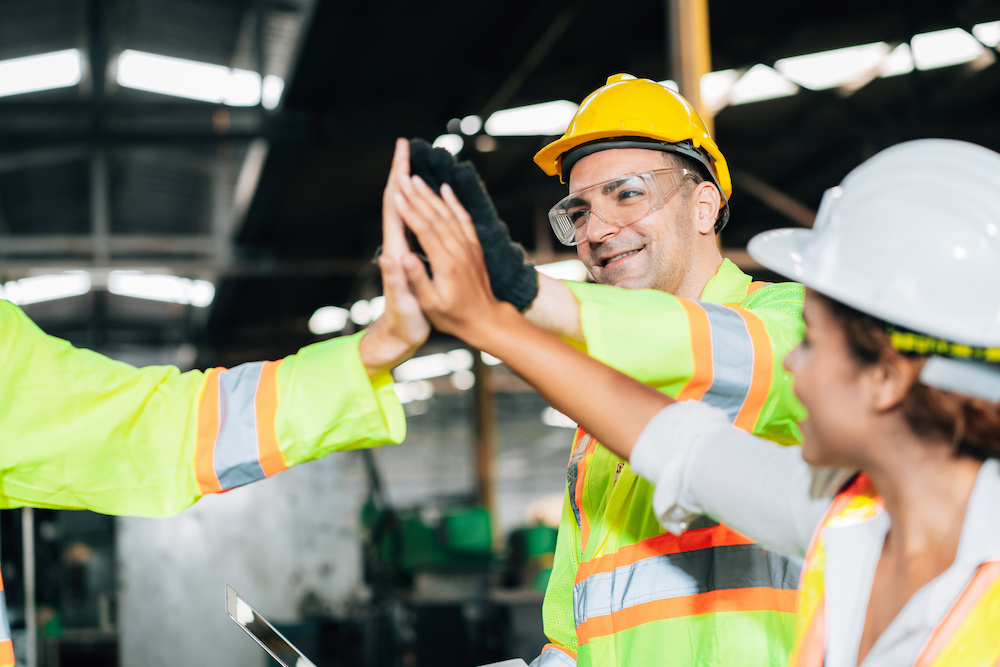The construction sector continues to grapple with the threat of falls from height. As per the Bureau of Labor Statistics (BLS) data from 2021, falls accounted for 378 of the 986 recorded fatalities in the sector. Addressing this persistent issue is paramount to ensure the safety and well-being of construction workers, and that’s what OSHA’s annual OSHA’s National Safety Stand-Down to Prevent Falls in Construction attempts to do.
This article delves into the importance of joining OSHA’s National Safety Stand-Down, the various ways you can get involved, and the role of innovative safety measures and technological advancements in mitigating the risk of workplace falls.
What is The National Safety Stand-Down
OSHA’s National Safety Stand-Down is a voluntary event that seeks to raise awareness of fall hazards and promote fall prevention measures. Falls are a preventable tragedy, and the Stand-Down is an excellent opportunity for employers across all industries to take a moment to address fall hazards and engage employees in discussions about fall prevention. By participating in the Stand-Down, employers prioritize workplace safety, educate employees about fall hazards, and take steps to prevent falls from happening.
How To Participate in the Stand-Down
Participation in the Stand-Down event is not limited to the construction industry; it is open to any workplace. During the event, employers can pause work activities to facilitate a safety-focused discussion or engage in other safety-related tasks like inspecting safety equipment, devising rescue plans, or reviewing job-specific hazards.
OSHA provides a list of potential topics to choose from but encourages employers to select topics relevant to their workplace’s fall hazards. OSHA also hosts a page with free and open events to the public, making it easy for employers and employees to find events in their area.
Additional Safety Measures To Prevent Workplace Falls
While the National Safety Stand-Down is important for raising awareness of fall hazards and prevention, it is just one piece of the puzzle regarding preventing workplace falls. Other safety measures, such as Job Safety Analysis (JSA), permits, workflows, and safety observations, can also play a critical role in fall prevention. In addition, by using software, companies can streamline these processes, improve compliance, and identify and address fall hazards more effectively.
Job Safety Analysis (JSA)
Job Safety Analysis (JSA) is a process that breaks down a job into its component steps, identifies hazards, and determines the best way to perform the job safely. This process can help employers identify fall hazards and develop strategies for preventing falls from occurring.
Software streamlines the JSA process by providing a platform for creating, distributing, and tracking JSAs. This ensures that all workers have access to up-to-date JSAs and standardizes these processes across the organization.
Permit to Work and Workflows
Establishing a permitting process for working at heights and creating workflows are other tools employers can use to prevent falls. Permits and workflows require workers to follow a predetermined set of safety protocols when working at heights. By requiring workers to follow established safety protocols, employers can reduce the risk of falls.
Software can facilitate the permit and workflow process by providing a centralized platform for creating and managing permits, tracking compliance, and providing automated reminders for permit renewals. By using software for permits and workflows, companies can ensure that workers follow established safety protocols when working at heights, reducing the risk of falls.
Safety Observations
Safety observations are an essential tool for preventing falls and other workplace accidents. Safety observations involve monitoring the workplace for hazards and identifying areas for improvement. This process can help employers identify fall hazards and develop strategies for preventing falls from occurring.
Software can streamline the safety observation process by providing a platform for conducting and documenting observations, tracking actions taken to address hazards, and generating reports on safety performance. By using software for safety observations, companies can identify fall hazards, take corrective action, and monitor the effectiveness of their fall prevention strategies.
How Anvl Can Help
Fall prevention is an ongoing process that requires a combination of strategies, including Job Safety Analysis (JSA), permits, workflows, and safety observations. While participating in the National Safety Stand-Down is an essential step toward raising awareness of fall hazards and prevention, it’s crucial to remember that more work is needed to ensure workplace safety.
Anvl’s Connected Worker Software can help. Anvl simplifies and centralizes the critical aspects of fall prevention, including data collection during inspections, analysis to identify trends and tracking of corrective action plans from start to finish. This enables leaders to gain real-time insights into their inspection and action item data across the organization, empowering them to make strategic decisions that create real change.
With easy-to-use mobile apps and digital workflows, Anvl keeps everything in one place, providing frontline workers with easy, offline access while in the field. This means that companies can catch issues faster, enhance communication, and identify improvements that help them achieve their safety goals.
Contact us today to find out how Anvl can help your business create a safer, more compliant workplace.
Anvl: Let’s Get to Work
Ready to see how Anvl can impact your organization? Contact one of our experts today.


